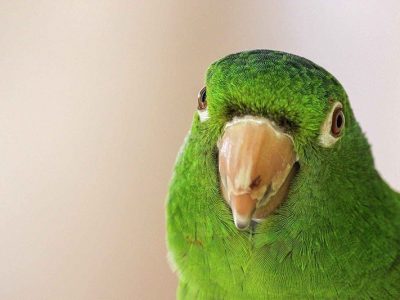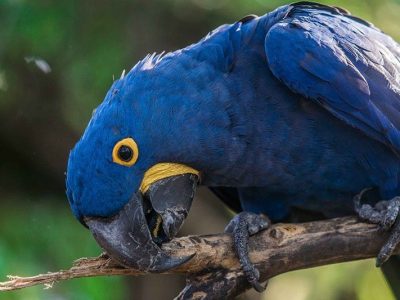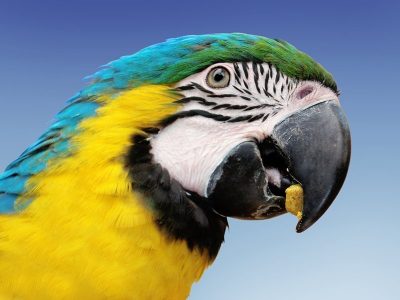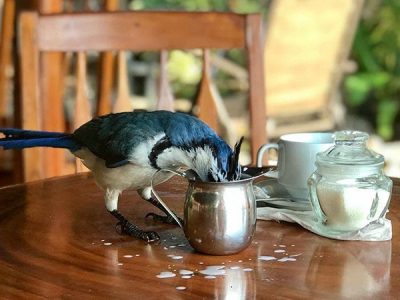Congratulations! You’ve got a bird!
You’ve prepped for your new family member by creating a safe and healthy environment – it’s time to bring them home and make sure to keep giving them all that they need.
Diet
If you’re lucky, your bird is already on a good quality pelleted diet. However, many young birds are weaned onto seed diets and have to be transitioned. If you’ve adopted an adult, you may not even know what food to feed! Converting a bird to pellets can sometimes be a major effort – and you can literally starve a bird to death by just taking away their current diet and offering a new one. Birds are smart cookies…gradually mixing increasing amounts of pellets in with the seed doesn’t fool the bird. They’ll either eat the pellets because they’ll eat anything or they’ll toss them aside seeking the fewer and fewer “real” food items in the bowl. Start by talking to your avian veterinarian about reasonable methods to try.
Entertainment
Like owning a working breed of dog in an urban environment (Border Collie anyone?), you will need to invest your time, energy and money in providing environmental enrichment for your bird – even the littlest of them. Birds are very intelligent and we have taken away most of the ways they would normally spend their time.
Basic training that all birds should have includes stepping up on command to all members of the family, stepping up for confident strangers and staying on a perch. With these basics you will have much better interactions with your bird. I would also recommend a few “safety commands” such as going into a carrier or coming when called (especially important for birds who can fly). In an emergency, like an earthquake or fire, these guys will fall back on training in same way we do and you will be much happier if you can just get the darn pet into the carrier so you can all get out safely! There are a lot of more intense fun things you can train your bird to do – it’s a great way to spend quality time with your bird that stimulates their natural intelligence. Barabara Heidenreich is an excellent trainer. She offers several videos on training, webinars and a plethora of great info on her website at www.goodbirdinc.com.
In addition to training you can’t forget about foraging! Foraging is an attempt to allow birds to use instinctual behaviors in the search of food. In the wild, birds can spend up to 6-8 hours in a day actively looking for food. They spend much less time consuming it, socializing or looking for predators. We swap out 6-8 hours of daily activity with about 3 seconds of “is the food bowl in the same place? Yup, it is.” Foraging, at home, involves toys that allow the bird to actively search for its own food. Birds have a variety of interest in different types of foraging and you’ll need to work with your bird to find what they like. Regardless, you must teach your bird about foraging – it may be an instinctual behavior but they still don’t know how to do it on their own. Captive Foraging is a great video to get you started. Foraging can occur both inside and outside the cage. You can purchase toys or make your own. Make sure, what every you buy or create, that it is appropriate for your bird’s size and beak strength.
While any bird can be trained and may enjoy foraging there is a world of difference between canaries, cockatiels and macaws. Make sure to tailor what you are doing to what is safe and healthy for your bird.






